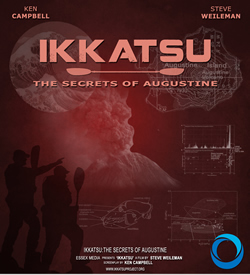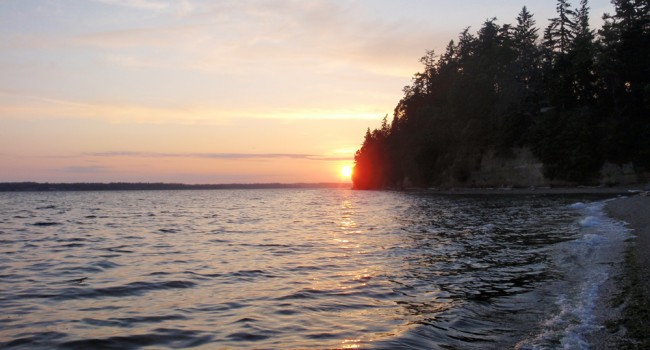
A Winter Tale
“It is easy to make plans in this world; even a cat can do it; and when one is out in those remote oceans it is noticeable that a cat’s plans and a man’s are worth about the same.”
Mark Twain
As I lay in my sleeping bag somewhere on the shores of Johnstone Strait, I knew that my journey had come to an end. In my heart and in my head I still had the desire to continue, but that desire alone was not enough. I had hoped to be the first to kayak around Vancouver Island in winter and although I was still not quite half-way into the attempt, I had no choice but to admit that this was as far as I would get. 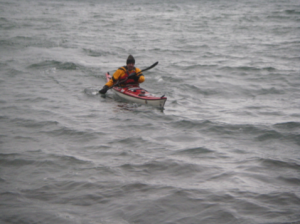 When the morning light arrived I would pack my gear into the dry bags, sweep the new snow off my kayak, and limp back the way I had come. From where I lay, it was about 10 nautical miles to the town of Sayward, the place I had left just the day before. Paddling back would be the most difficult part of the trip.
When the morning light arrived I would pack my gear into the dry bags, sweep the new snow off my kayak, and limp back the way I had come. From where I lay, it was about 10 nautical miles to the town of Sayward, the place I had left just the day before. Paddling back would be the most difficult part of the trip.
I’m not sure when I first came up with the idea to attempt a winter circumnavigation of Vancouver Island, but I’d been planning the expedition for the better part of a year. In 2000, I became the first American to paddle around Newfoundland, Canada’s easternmost province, and perhaps it was the symmetry of the attempt that appealed to me. Vancouver Island is a popular destination for sea kayakers and the 750-mile circle has been accomplished by scores of paddlers over the years, but I couldn’t find any record of anyone who had paddled around it during the cold, gray months of winter. I thought it might be interesting to give it a try.
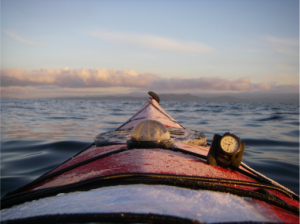 I set out on the 14th of January from Larrabee State Park, just south of Bellingham, Washington, on an ugly, gusty day. I had barely covered two miles before I pulled ashore and set up camp. Two down, 748 to go. Over the course of the next couple weeks, I was able to improve on the daily average, and for the most part, the paddling conditions were not too onerous. The cold temperatures were the biggest obstacle, along with a sore left shoulder that made each day fairly painful. I had torn my rotator cuff a year or so before, and the repetitive nature of pushing a loaded boat through the water for 8-10 hours a day was taking its toll. Other than these two things, however, the trip was going well. Vancouver Island is a beautiful place, and the scenery made the cold and the pain seem easier to endure.
I set out on the 14th of January from Larrabee State Park, just south of Bellingham, Washington, on an ugly, gusty day. I had barely covered two miles before I pulled ashore and set up camp. Two down, 748 to go. Over the course of the next couple weeks, I was able to improve on the daily average, and for the most part, the paddling conditions were not too onerous. The cold temperatures were the biggest obstacle, along with a sore left shoulder that made each day fairly painful. I had torn my rotator cuff a year or so before, and the repetitive nature of pushing a loaded boat through the water for 8-10 hours a day was taking its toll. Other than these two things, however, the trip was going well. Vancouver Island is a beautiful place, and the scenery made the cold and the pain seem easier to endure.
By the end of the first week I had made it past Nanaimo and deep into the Strait of Georgia. I camped each night close to the water and awoke to thick frost or snow every morning. On the water before sun-up each day, timing my passages through some of the trickier sections, I had made it to the village of Sayward, in Johnstone Strait, by the end of the second week. At this point, I was about 200 miles into the journey. Paddling conditions had deteriorated somewhat by this time, with high winds coming more frequently and as much as 6 inches of snow falling on occasion. My feet were often numb with cold and felt more like a couple blocks of wood than parts of my own body.
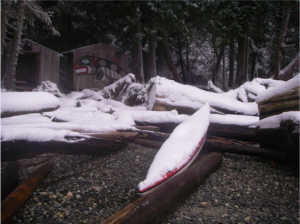 Leaving Sayward on a Monday morning, I paddled northwest up the Strait with the current pushing me along nicely. Near the aptly-named Windy Point, I was slammed with outflow winds coming from the mainland inlets that turned what had been fairly favorable paddling conditions into a frothy maelstrom of 4-foot wind waves in a matter of a few minutes. I started to make my way from the middle of the Strait toward the island shore, a relatively short distance that took me about 40 minutes to cover. I took a forward stroke when I could, but the morning had largely turned into an exercise in bracing that quickly made my shoulder scream. In the course of the paddle, my bracing strokes became less and less effective, and I began to worry that if I were out in the soup for too much longer, I might not be able to hold myself upright. I didn’t even want to think about having to roll.
Leaving Sayward on a Monday morning, I paddled northwest up the Strait with the current pushing me along nicely. Near the aptly-named Windy Point, I was slammed with outflow winds coming from the mainland inlets that turned what had been fairly favorable paddling conditions into a frothy maelstrom of 4-foot wind waves in a matter of a few minutes. I started to make my way from the middle of the Strait toward the island shore, a relatively short distance that took me about 40 minutes to cover. I took a forward stroke when I could, but the morning had largely turned into an exercise in bracing that quickly made my shoulder scream. In the course of the paddle, my bracing strokes became less and less effective, and I began to worry that if I were out in the soup for too much longer, I might not be able to hold myself upright. I didn’t even want to think about having to roll.
I made it to shore and pulled myself from the kayak. Standing on that gravel bank and looking back at the water, I was hit with the realization that the expedition had come to an end. All the planning and logistical work, all the early morning training paddles and juggling of responsibilities back home that had made the trip possible, everything had ended here on this nameless beach. I was struck then, as I am still, at how quickly an undertaking like this one can change from being a living thing to simply being over. The border between the present and the past is such a thin, thin line.
I returned to Sayward the next day, paddling slowly with crippled strokes through the eddies along shore. My wife and one year-old son drove up to get me a few days later and even though I was still dejected over the fate of my trip, seeing Mary and Micah again helped to put it all into perspective. Nothing takes the sting out of failure like loving arms and the giddy laughter of a child.
Will there be another try in the future? It seems unlikely now. There are other places I’d like to see and life is so short. I am sure this unfinished business will nag at me in the months ahead but I know that there will be other days and other trips, other chances for adventure. For now, I will have to be content with what I was able to accomplish and allow time to work its healing magic on my pride as well as my torn shoulder.
(This article was originally published on the Canoe and Kayak magazine web site in the summer of 2008. As far as I know, that Vancouver Island winter circumnavigation record is still out there, still waiting for someone to be the first. I’d be lying if I said I hadn’t thought about another try… I still think it can be done. Who’s in?)

